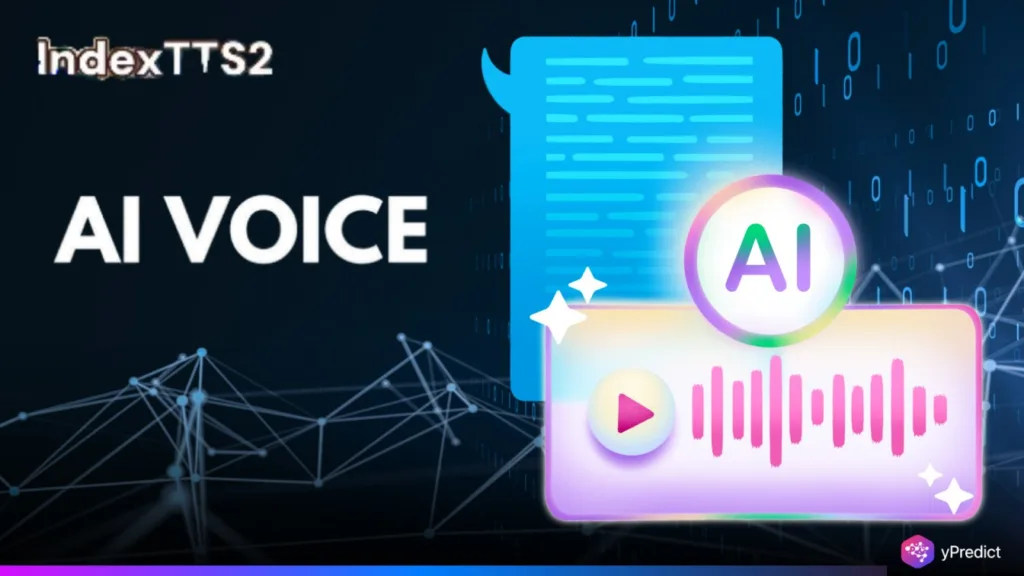
IndexTTS2 is an advanced text-to-speech model that enhances emotional expression and duration control, two critical capabilities long sought in the AI space. It separates voice timbre from emotion, enabling zero-shot voice cloning and emotional transfer. Early results show superior accuracy, speaker similarity, and emotional fidelity compared to existing models. This positions IndexTTS2 as a powerful tool for human-like AI interactions. Its ability to generate expressive, controllable speech is a major leap forward for voice AI, with implications across industries like gaming, customer service, and education. It signals a move toward more adaptable, emotionally intelligent AI systems.
Core Innovations – What Makes IndexTTS2 a Breakthrough
IndexTTS2 directly addresses two of the most complex problems in text-to-speech AI: how to control speech duration precisely and how to express nuanced emotions without sacrificing clarity or identity. It achieves this by decoupling timbre and emotional content, allowing models to retain a speaker’s voice while adopting different emotional states, something previous systems struggled with. This flexibility enables more natural and emotionally aligned voice synthesis across diverse contexts.
The model supports two generation modes: one where users can define the exact token length of the output for perfect alignment with visuals or subtitles, and another that allows freeform generation with prosody retention for natural delivery. This is critical for AI in dubbing, gaming, or accessibility tech where timing matters.
IndexTTS2’s architecture also integrates GPT-based latent vectors to preserve pronunciation under emotionally intense speech, preventing common artifacts like slurring or tonal collapse. Its “soft instruction” system adds another layer of usability; users can influence output using simple text cues (e.g., “speak sadly” or “sound energetic”), making it more intuitive and controllable. In terms of the AI field, this level of granularity and emotional fidelity marks a shift: speech synthesis is moving from robotic output to adaptive, emotion-aware communication, an essential step toward general AI assistants that can connect on a human level.
Performance and Broader AI Implications
IndexTTS2 has proven to be measurably better than a number of AI benchmarks. It has better scores in word error rates, results in higher scores of speaker similarity, and performs better on the task of emotion classification as compared to its competitors. Such gains show more human and more accurate speech of the AI, which is crucial to virtual assistants, digital surrogates, and human-computer interface technology. This development indicates a trend in the field of AI at large: the movement towards the Multi-Dimensional Modeling, where functions have to contend with not only what to say but also how to say it.
It also increases accessibility work in that it facilitates expressive text readers and voice interfaces for blind people. IndexTTS2 is one of the sources of the future AI models, which might integrate vision, speech, and emotion into a single multimodal system. The ability to quickly create some version of its own, combined with open-source access and modularity, further democratizes the TTS quality, allowing smaller labs and start-ups to create emotional voice AI without needing huge compute resources. Concisely, IndexTTS2 moves the voice synthesis to the most human interface layer, which is critical in empathetic AI and fluent machine interaction.
Shaping the Next Generation of Voice AI
IndexTTS2 is a landmark in the field of voice AI, after which it is no longer impossible to achieve expressiveness, exactness, and control of emotions. Innovation of the company falls within a broader movement of AI to shift away from being merely capable to being human, where machines are not simply capable of comprehending content but also articulate it in human-receptive ways. The more conversational, relatable, and aware of their emotions AI agents are, the more tools such as IndexTTS2 will determine the level at which the AI agent is able to speak authentically.






